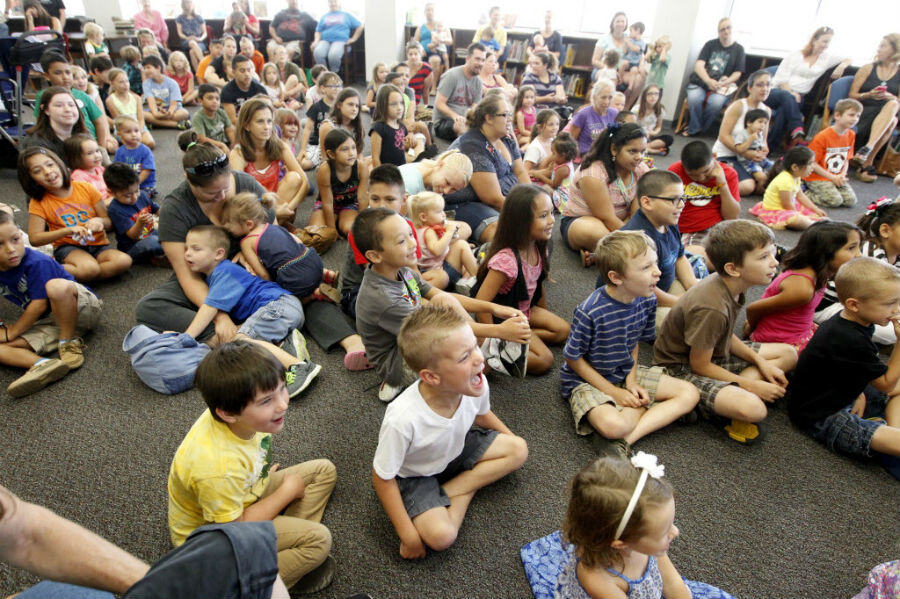US Census: Youth diversity hits all-time high
Loading...
The proportion of under-18 Americans who are members of minority groups hit an all-time high last year, new Census data show. Moreover, the increase has little to do with new immigration or the stream of thousands of migrant children who have been illegally crossing the US-Mexico border, demographers say.
“These are American-born children that we’re talking about,” says demographer Kenneth Johnson, who teaches sociology at the University of New Hampshire in Durham, N.H. “Immigration is still important, but it’s not the driving force that it once was.”
In 2013, “non-Hispanic, single-race whites” made up 62.6 percent of the general US population, according to new Census data released Thursday. By contrast, among Americans under the age of 18, whites were just 52.4 percent of the population, the US Census Bureau reports.
“Children are the vanguard of America’s increasing racial and ethnic diversity,” Professor Johnson and his colleagues at UNH’s Carsey Institute wrote in an April policy brief. “For America’s children and youth, the future is now.”
Demographers predict that white Americans will slip from the majority by the middle of this century.
Latinos are the largest minority group in the United States, making up 17.1 percent of the general population. While Congress is deadlocked on immigration reform legislation, the number of Hispanic Americans has been steadily rising, largely fueled by natural increase (births minus deaths) rather than immigration.
As of July 1, 2013, 54 million Latinos were living in America – 1.1 million more than the previous year, the Census data reveal. More than three-quarters of that increase came from children born in the US.
The percentage of US-born Latinos has been steadily increasing for the past 20 years, since immigration from Latin America began to slow in the mid-2000s, says Mark Lopez, director of Hispanic research at the Pew Research Center. Thirty-six percent of the nation’s Hispanic population is foreign-born, compared with 40 percent eight years ago, Mr. Lopez says.
Pew’s Hispanic Trends Project reported last week that for the first time in two decades, the majority of Hispanic workers in the US are American-born. The authors of the Pew study attribute that shift to a “waning inflow of Hispanic immigrants” resulting from tighter border controls and increased deportations in recent years.
According to Johnson, the profound expansion of youth diversity is rooted not just in minority community trends, however, but also in those of white communities.
“This is happening both because the number of minority children is increasing and the number of white children is diminishing,” Johnson says.
Both whites and minorities are having fewer children than they used to, but Hispanic women still have moderately higher birthrates than white women and the number of young white women of childbearing age is declining, Johnson adds.
Also, for the second year in a row, the number of white American deaths has actually surpassed the number of births, a shift that caught Johnson off guard last year.
“Demographers who watch this knew that this was coming because the baby boomer generation is aging and the number of white deaths is rising, but I didn’t expect it really for another few years,” Johnson says.
Historically, minority populations have been most concentrated in major urban centers along the coasts. In recent years, however, that trend has been giving way, with some of the greatest growth happening in suburban and rural communities, Johnson says.
Latinos who once were concentrated in the Los Angeles area and in southern border states have spread into other parts of the US, Lopez says. Growth of the minority population has been slowest in the Great Plains, the northern Great Lakes, and northern New England.






